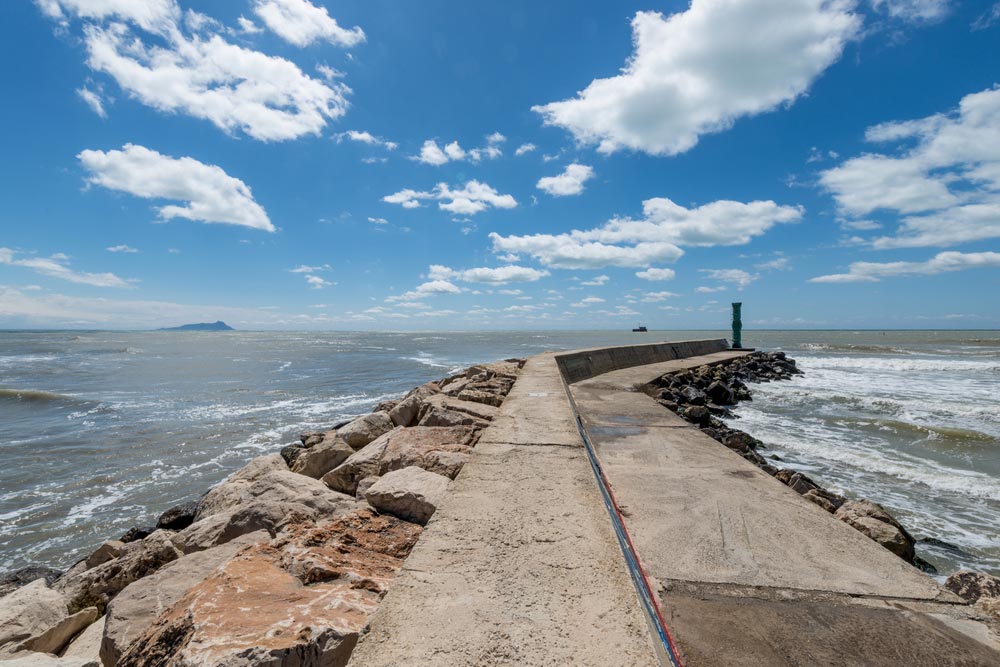Bulkheads are important for protecting waterfront properties from erosion and flooding, but they can deteriorate over time. Once a bulkhead shows signs of damage, you need to repair it as soon as possible because it will keep your property from deteriorating even further. They depend on the surrounding soil for structural support, which is why soil erosion is one of the most common causes of bulkhead failure.

Common Signs of Bulkhead Failure
Managing a property with a bulkhead requires an understanding of waterfront barriers and how they work. You also need to know how to spot the signs of structural decay. Some of them include the following:
- Soil depression — This is often caused by soil loss near the structure. Water is seeping through or moving underneath the bulkhead, which is weakening the structure and contributing to soil erosion.
- Rust stains on the surface — This kind of damage is a sign of corroded rebar inside the concrete (which can expand, crack, and destabilize the structure).
- Movement or shifting — This can be caused by hydrostatic pressure and/or a lack of supporting soil, which can cause sections of the wall to move or shift.
- Cracks in the concrete — This can be the result of spalling in the concrete caused by rebar corrosion or movement caused by hydrostatic pressure or unstable soil.
- Water pooling or seepage — This is a sign that the bulkhead isn’t providing an effective enough barrier from the water, which can lead to soil erosion and instability in the surrounding area.
- Loose or missing fasteners — This can compromise the entire structure, which can eventually lead to failure. Checking and tightening these components will make sure your bulkhead can maintain its structural integrity.
Bulkhead failure can also be caused by any of the following:
- Erosion or undermining — The gradual erosion of the soil behind the bulkhead can weaken its foundation, which can cause it to sink or even collapse.
- Wave overtopping — Waves that exceed the height of the bulkhead can wash over it, which can erode the soil behind it and compromise its effectiveness.
- Corrosion and deterioration — Exposure to salt water and other exterior elements can result in corrosion and deterioration of the materials, which can weaken the bulkhead’s structural integrity.
- Foundation settlement — Uneven settling of the bulkhead’s foundation can lead to structural instability and cracking.
- Aging and wear — The materials of your bulkhead can degrade over time, which can reduce its strength and stability.
- Infrequent maintenance — Lack of regular maintenance can cause minor issues to become major problems.
- Environmental changes — Changes in water levels, more frequent storms, and other coastal processes can put more stress on your bulkhead.
Recognizing and addressing these signs can keep you from dealing with expensive repairs and serious property damage. Regular DIY inspections are a great way to stay on top of any possible issues. But if your bulkhead needs to be repaired, you need to contact a professional as soon as possible because minor issues can turn into serious problems if they’re left unattended.
If you have any questions about the signs of bulkhead failure, be sure to speak to a professional. This person can give you more information about what to look for and what you can do if there’s a problem.
The Importance of Regular Bulkhead or Seawall Inspections
Bulkheads play an important role in protecting coastal properties from erosion, storm surges, and other forces of nature. But these structures can deteriorate over time (which can compromise their effectiveness). When it comes to bulkheads, it’s best not to leave anything to chance. But if you invest in a professional inspection on a regular basis, you’ll have the peace of mind of knowing that you can find potential issues before they have a chance to get worse.
A thorough inspection is an important part of revealing any hidden problems, so you can catch them early enough before they cost too much or become too much of a hassle. During a professional inspection, the contractor will do the following:
- Inspect both sides of the seawall for any signs of damage or weakness.
- Evaluate the need for any specific repair measures to provide additional support.
- Provide a detailed assessment report along with any specific recommendations.
If you’re looking for one of the best places for bulkhead repair in Corpus Christi, be sure to reach out to Streem Foundation Repair. We have a team of experienced professionals who would be more than happy to speak with you about your specific needs!
